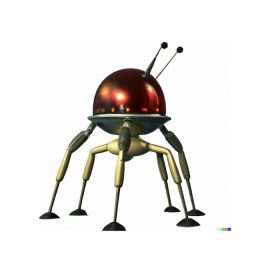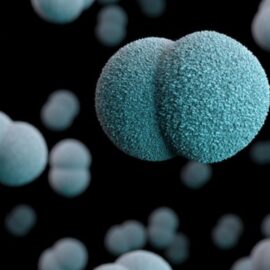
What’s Rachel Carson’s book Silent Spring about? Are pesticides damaging to the environment and human health?
In her 1962 book Silent Spring, biologist Rachel Carson condemns the widespread use of pesticides in the 20th century. She argues that these chemicals threaten to devastate the natural environment and poison animals and humans alike.
Read below for a brief overview of Silent Spring.
Silent Spring by Rachel Carson
In Rachel Carson’s pop science and early environmentalist 1962 book Silent Spring, she argues that the use of pesticides like DDT—which was widespread throughout the United States in the 1950s and ’60s—poisons the environment and causes serious, sometimes permanent damage to animals and humans alike, potentially leading to a permanent “silencing” of the natural world. Carson believed that chemical companies and government organizations like the Department of Agriculture and the Food and Drug Administration failed to advise people of the dangers of pesticides, approving them for commercial use even when evidence suggested that they can cause paralysis, infertility, cancer, and death. This is despite the fact that pesticides are often ineffective in eliminating weeds or crop-destroying pests.
Silent Spring was published in 1962 and became an instant bestseller. Carson, a marine biologist and conservationist, had already written extensively about ecology and marine biology, but usually with an educational rather than political angle. In 1963, she was called to testify before Congress on the dangers of pesticides, and an hour-long CBS documentary drew more public attention to the topic. The book was likely inspired by her communications with biologists, organic farmers, and birders across the country in the late 1950s and early ’60s, who reported seeing immediate and devastating effects on the environment following the spraying of pesticides.
Silent Spring has been credited with kicking off national conversations about pollution, which led to the American environmentalist movement, as well as the formation of the Environmental Protection Agency and the banning of the pesticide DDT in the early ’70s under President Richard Nixon. However, the book also faced backlash from chemical companies and even other scientists, who argued that pesticides were necessary to prevent disease and famine and that Carson, who had conducted her research without university backing, was an unreliable source—as well as attacking her on sexist grounds. Today, Carson’s claims are widely accepted.
In the book, Carson draws an explicit comparison between pesticides and the atomic bomb, noting that the effects of pesticide poisoning often resemble those of radiation poisoning and that pesticides may pose a similar existential threat to the world. If misused, they could wipe out entire species, including humanity. Despite this, Carson doesn’t argue that pesticides should never be used, but rather that they should be used sparingly and in small doses, alongside more environmentally friendly and cost-effective pest-control tactics. She claims that this approach has repeatedly proven more effective in eliminating or controlling pest populations.
What Are Pesticides?
Carson describes pesticides as chemicals applied to the environment to eliminate or reduce the population of a plant, insect, or animal. Many of these poisons were first discovered in the development of chemical weapons for World War II. After the war, pesticides were used to increase crop production by eliminating potential predators and to control weeds and pests like houseflies in suburban areas. They were also sometimes used in conservation efforts; for example, to control overpopulation by “invasive” or non-native species. However, Carson argues that the dangers pesticides pose to the environment ultimately outweigh the economic and agricultural advantages of pest control.
Though Carson believes that pesticides can be used safely in smaller or less poisonous doses, she condemns the “indiscriminate” spraying practiced by the US at the time the book was published, in which hundreds of acres would be treated at once. She argues that even when these campaigns are successful, the effects aren’t limited to the targeted pest, but damage the environment as a whole. Poisons that are effective against one type of insect or plant are generally successful at killing dozens of other species, as well as birds, fish, small mammals, farm animals, pets, and even people. Chemicals can also easily spread through soil, runoff, or the food chain to affect surrounding water supplies and ecosystems.
There are two major types of pesticides: insecticides, which target insects, and herbicides, which target plants. Many of the same chemicals can be used as both insecticides and herbicides.
Insecticides
Insecticides are pesticides used to control the spread of insects, especially those that threaten to spread disease to humans or to cash-producing plants like balsam trees, sugarcane, and cotton. Carson argues that insecticides became increasingly popular as monoculture farming—the practice of devoting an entire field or fields to a single crop—became more common in the early 20th century. Monoculture farming is especially vulnerable to losing an entire crop to infestation, and the US government responded to this threat by promoting insecticides, both using them in its own massive chemical campaigns and approving their commercial use by farmers and suburbanites.
Carson describes two major categories of pesticides: chlorinated hydrocarbons, which have a carbon base, and alkyl or organic phosphates, based on phosphoric acid. Hydrocarbons like chlordane, dieldrin, endrin, and DDT can cause severe liver and kidney damage in some animals, and may cause hepatitis. Phosphates like malathion and parathion can damage the nervous system, causing tremors or convulsions before death. These chemicals are often mixed with oil or arsenic for delivery to the environment and can be absorbed through the skin, breathed in, or consumed. Carson notes that malathion and parathion in particular are similar in chemical makeup to nerve gases developed by the German government during World War II.
Herbicides
Herbicides are pesticides used to control the spread of plants, generally to prevent them from encroaching on farmland or to replace “unproductive” land with plants that can be used for agriculture or animal husbandry. This can be on a large scale, as in the attempts to replace the sagebrush lands of the midwestern US with grasslands for sheep and cattle, or on a small scale, as in the individual spraying of private lawns, parks, and golf courses to remove weeds in favor of trees and flowering bushes. Carson criticizes both practices, arguing that the designation of some plants as undesirable is arbitrary (grass itself is sometimes considered a weed) and disrupts the natural balance of the environment.
According to Carson, many insecticides are also used as herbicides, including DDT, dieldrin, and malathion. Other widely used chemicals include the chlorinated hydrocarbons lindane, DDD and heptachlor, the arsenic-based sodium arsenite, and metabolic stimulants like dinitrophenol and pentachlorophenol, which cause the target’s body temperature to rise until death. Similarly, the herbicide 2,4-D causes uncontrolled growth in the targeted plant, leading it to run out of energy and die. Carson notes that there are numerous documented cases of people suffering nerve damage, fatigue, and muscular weakness after breathing in or having skin contact with these herbicides.
Are Pesticides Effective?
Throughout the book, Carson questions the efficacy of chemical pesticides compared to other, less environmentally devastating methods of pest control. She also questions the need for the massive chemical campaigns of the 1950s and early ’60s, in which millions of acres of American land were sprayed and entire communities of animals wiped out. Many of these campaigns failed to meaningfully reduce the population of the target species, and some of those species built up resistances to pesticides over time, requiring the application of more dangerous chemicals in greater amounts every year. In Carson’s view, these repeated and ineffective campaigns threaten to wipe out entire species and waste millions of US taxpayer dollars.
Carson cites three major arguments against pesticides: They aren’t needed to protect the food supply of countries like the US, they disrupt the balance of various populations in an ecosystem, and they may ultimately make pests stronger by allowing them to build up resistance to chemicals through repeated sprayings.
Pesticides Are Unnecessary
While pesticides supposedly protect crops and thus the country’s food supply, Carson points out that the US was actually dealing with an overproduction problem in the 1950s-’60s. Far from needing to be concerned about food shortages, Americans in 1962 were paying millions of dollars in taxes to store excess food, most of which would go bad before reaching consumers.
Carson argues that in addition to the arbitrary nature in which plants are labeled weeds, many of the insects that were the subject of extermination campaigns, such as the invasive Japanese beetle, pose only a limited danger to native species. Ultimately, Carson suggests the need for pesticides may be deliberately exaggerated by chemical companies in order to sell products.
Pesticides Disrupt the Balance of an Ecosystem
While pesticides are deadly, some species are naturally resistant to them. These species’ survival, while their natural predators die en masse, may lead to overpopulation, which can devastate an environment worse than the spraying itself. For example, the spraying of Douglas firs to kill spruce budworms led to those firs becoming infested by spider mites instead. The same occurred in Louisiana sugarcane fields, where fire ants were killed off to protect people from their sting and the population of sugarcane borers subsequently exploded. Finally, spraying campaigns might even kill off the natural predators of the target population, allowing the pest to return in greater numbers the next year.
Pesticides Lead to Pests Building Up Resistance
Beyond the fact that pesticide campaigns sometimes fail to kill the targets in the first place, Carson argues that there’s evidence that insecticides are becoming less effective over time as insects build up natural resistance and even immunity to the chemicals used. Because insects generally live for a much shorter time than humans, several generations can live and die in the space of months or even weeks. While some are killed off by pesticides, those that survive pass their more resistant genes on to their children. This might mean possessing an enzyme that allows them to detoxify DDT inside their body or a tendency toward behavioral patterns such as nesting outside rather than on walls sprayed with pesticides.
Carson argues that the result of pesticide campaigns, then, has not been to reduce target populations, but to make those target populations stronger against human intervention. Carson notes that this is particularly troubling for campaigns against the spread of diseases like malaria, yellow fever, dysentery, and typhus through mosquitoes, flies, and lice. The response of the chemical industry has been to use deadlier poisons in greater amounts, which will further devastate the environment long before it has any meaningful effect on the pests. Most species reproduce on a much slower timescale than insects, and Carson estimates that it would take hundreds if not thousands of years for humans to develop a natural resistance to pesticides.
The Dangers of Pesticides
Much of the book is dedicated to describing the damage done by pesticides to various species across the US, not just in terms of deaths but in mass sterilization and the possibility of more serious genetic consequences decades down the line. Carson emphasizes that some degree of pesticides have been found in virtually every plant, animal, and person across the country, regardless of whether they’ve been directly exposed to spraying. Some of the worst effects of spraying may still be unknown, but they’ll come to affect millions of people.
Cross-Contamination of Pesticides
While pesticides are already deadly in the lab, Carson argues that they become deadlier once applied to an environment, where they spread far beyond a targeted area through soil, water, and the food chain. Spraying can wipe out communities of larger animals while leaving insects and plants untouched due to biomagnification, the process in which a substance becomes increasingly concentrated and thus toxic as it moves up the food chain. For example, spraying against the Clear Lake gnat ultimately killed large numbers of western grebes—the birds fed on the fish, which in turn fed on the gnat. Humans’ high position on the food chain makes them similarly vulnerable to contaminated meat, fruits, and vegetables.
Carson explains that aside from pesticides’ impact on animals directly, they can also poison the soil and water that make up an environment. In sprayed soil, roots don’t reach as deep, insect activity no longer aerates the dirt, and the nitrification process is interrupted. Plants grown there often contain pesticides, even if they were planted years after the spraying. Water sprayed may become unsafe to drink, and different chemicals can combine in lakes or ponds to form even deadlier pesticides—for example, 2,4-D has been found in waterways that were never sprayed. Though pesticides break down more quickly in water than in soil, they can still linger for years, and repeated spraying makes full environmental recovery impossible.
Specific Effects of Pesticides
Common effects of pesticide spraying on insects, animals, and humans can include nerve damage and convulsions, vomiting, diarrhea, fever, difficulty breathing, and mass death. Though pesticides have yet to devastate human populations the way they have insects, birds, fish, small mammals, and livestock, Carson gives multiple examples of government-sponsored spraying campaigns that resulted in hospitalizations. The 1959 spraying of aldrin over parts of Michigan and the 1954 and 1960 spraying of dieldrin in Illinois both sickened people and killed large numbers of birds, cats, rabbits, and squirrels, despite federal and local Agriculture Departments’ insistence that the chemicals were safe.
Beyond the documented reactions to pesticides, Carson argues that there’s evidence pesticides can sterilize humans, cause genetic damage, and increase the risk of cancer. She also warns that pesticides may have additional harmful effects that won’t become apparent for years to come.
Public Ignorance About Pesticides
Carson argues that people are vulnerable to pesticides not just because the chemicals are dangerous but also because chemical companies and governments have done little to educate the public about the danger. Studies have shown that most Americans are ignorant of pesticides’ ability to poison or cause disease, even as they use them in their homes and gardens—resulting in hospitalizations when people inadvertently contaminate their own water supply or fill an enclosed room with deadly chemicals. Local agriculture departments often downplay or outright lie about the dangers of spraying campaigns carried out over residential areas, and some have been sued after the fact by farmers whose product was destroyed.
Since chemical companies have no incentive to warn about the dangers of their products, Carson believes that the best solution is more government oversight. The Food and Drug Administration is intended to protect public health by regulating commercial products, but their ability to control the spread of pesticides is limited by the small number of employees and the fact that many sprays are permitted to go to market even as they’re still being tested for carcinogenic or otherwise harmful effects. Carson argues that the department’s reach should be expanded, including allowing it to ban some pesticides outright, and that the federal government should do more to educate people about the uses and dangers of pesticides.
Alternatives to Pesticides
Carson argues that while pesticides use chemicals to control plant, insect, or animal populations, many biological control methods are just as effective, less expensive, and less harmful to the environment. While she does not advocate eliminating pesticides entirely, she suggests using them in more targeted ways, alongside tactics like introducing natural predators and diseases to an environment, sterilization, trapping, and so on. These methods would bring all the advantages of pesticide use for agriculture, beautification, and conservation without endangering the environment or people’s health.
Limited Spraying
At the time of Carson’s writing, pesticides were usually distributed from the air, sprayed indiscriminately over dozens or hundreds of acres at a time. Carson argues that a more effective method would be to apply the pesticides directly to the roots or nests of the species being targeted, keeping the poison relatively contained from the rest of the ecosystem. Though this approach would be more time-intensive, it would do less environmental damage and in many cases would be cheaper than dropping hundreds of gallons of pesticides at once.
Spraying individual weeds rather than an entire field would mean that existing plants could quickly fill in the gaps, rather than the whole area needing to be replanted. Similarly, spraying only the eggs of the target insect would prevent the spread of pesticides to its predators, which may not feed on the insect until it reaches the larval stage. Carson notes that such limited sprayings generally only need to be applied once or twice; the environment quickly stabilizes, with new species filling the niche of the old pests.
Introducing Predators and Diseases
Carson argues that because invasive species generally flourish due to a lack of natural predators, importing those predators or diseases can easily stabilize the population, so long as the new imports don’t threaten the ecosystem as a whole. This method has been proven many times to be effective—for example, the importation of the Tiphia moth and milky disease both cut down on the population of the Japanese moth in the US, and Argentine moths have been used to control the prickly pear cactus in Australia. Though more scientifically complicated, importation is generally less expensive than even a single pesticide campaign.
Other Biological Controls
Carson gives examples of several other methods of biological control, though she notes that many of these are still being tested and may prove more expensive and difficult to implement than pesticide campaigns. One example is the male sterilization technique, which involves capturing, sterilizing, then releasing large numbers of male insects, causing a number of eggs to go unfertilized and the population of the species to quickly reduce over a single generation. This method has been successfully tested against multiple fly species in North America and may prove effective against disease-carrying insects like the tsetse fly and mosquitoes.
Laboratory testing has also suggested that the behavior of insects can be modified using ultrasonic sound or the pheromones and other chemical attractants naturally produced by insects. Insects can be lured into traps using mating signals or encouraged to leave the area by false signals indicating the presence of predators. Carson notes that some of these techniques have been used to trap and kill gypsy moths, but only on a small scale and at great expense. Still, she argues that these methods are worth exploring as a form of insect population control that has a limited effect on the surrounding environment.






